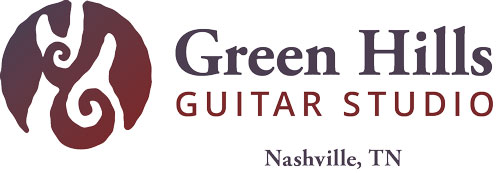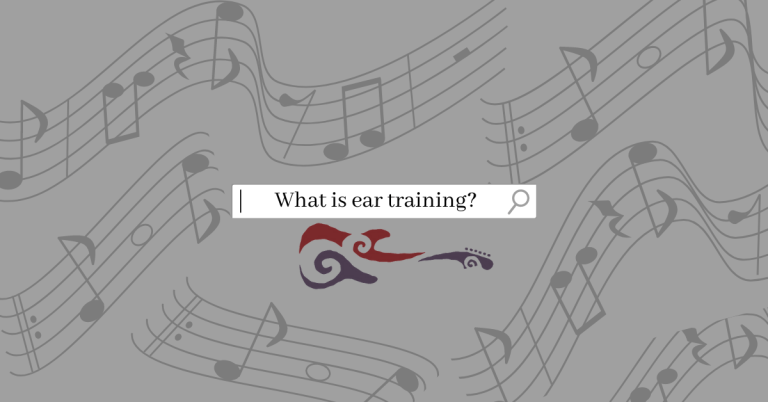Introduction to the CAGED System and Its Importance
Welcome to “Introduction to the CAGED System and Its Importance,” a journey tailored for aspiring guitarists and songwriters who yearn to master their craft and better understand music theory. If you’ve ever stared at the sprawling canvas of a guitar neck and felt overwhelmed by its complexity, you’re not alone.
Imagine this: you’re a beginner guitarist or songwriter, eager to learn the instrument and create your own music. But as you gaze at the daunting expanse of the guitar neck, confusion sets in.
Feel familiar? Well, don’t beat yourself up or panic. Learning the guitar neck is confusing. It’s like a fragmented piece of modern art. Due to the tuning of the guitar, the chord shapes and scale patterns lay in a series of patterns…like a jigsaw puzzle.
If you learn the patterns and recognize where the root notes are, it speeds up your learning process and aids in understanding the guitar neck. There’s a system that can make navigating the guitar neck and understanding chords feel like a breeze – the CAGED System.
The Caged System also comes in handy for crafting solos and licks as well. We’ll get to the scale overlays in a later guitar lesson.
What is the CAGED System?
The CAGED System is a powerful method that extends beyond its memorable acronym. It serves as a navigational roadmap, ingeniously breaking down the intricate guitar fretboard into easily digestible segments.
This approach is built upon five fundamental chord shapes—C, A, G, E, and D—which correspond to common open chord forms.
By interconnecting these shapes, the CAGED System empowers guitarists to unlock the full potential of the fretboard, enabling seamless chord transitions, scale navigation, and creative improvisation.
It’s a transformative tool that transcends beginners’ challenges, offering a comprehensive framework for guitar mastery.
Understanding the Acronym: CAGED
Let’s revisit our open-position chords, also called “cowboy chords.”
C Chord
Let’s start with the “C” in CAGED. The C shape originates from the open C major chord, a familiar friend to anyone who has strummed a guitar. Imagine a barre chord version of that open C, sliding up the neck to create a movable shape. Voila! You’ve just unlocked a new chord position.
A Chord
Moving on to “A.” The A shape stems from the open A major chord. It’s like a puzzle piece that fits into different positions on the neck. Visualize how this shape can be shifted and replicated up the frets, granting you access to various chord voicings.
G Chord
“Good old G” is up next. The G shape is born from the open G major chord. Imagine transitioning from the open G to a barre version that can be moved up the neck. Suddenly, the guitar neck becomes a canvas for your creativity.
E Chord
Now we arrive at “E.” The E shape takes its form from the open E major chord. Picture the magic of transforming this open chord into a versatile barre shape, expanding your chord vocabulary exponentially.
D Chord
Lastly, “D.” The D shape mirrors the open D major chord. By now, you’re familiar with the drill: adapt it into a barre shape that can be transported anywhere on the neck, making you a fretboard explorer.
Getting Started with the CAGED System for Guitar
Below, you will see these open-position chords laid out in order of C-A-G-E-D. It’s important to see the chord shape and know where your root notes are for each shape. This becomes very important as we begin learning songs, playing, and writing with others.
Yes, you HAVE TO KNOW what you are looking for and where you are going.
If you know these chord shapes already, memorize the root notes found within the chord shapes and start moving the shape up the neck and finding different root notes.
Be able to name them…anywhere! If you don’t know these chords yet, this is a great place to get started! You will use these chord shapes a lot!
Remember, be able to identify and name the root note. The root note gives the chord its name and is ask important mile marker to look out for as you move around and navigate the neck!
For example, what if you wanted to play a song with a friend, and they were playing in the open position? You want to apply barre chords or use a capo and play the same song without changing the key, guessing, and sliding around until you find it.
That’s not very professional or very kind to your friend trying to sing and play! Where do you go on the neck, what chord shapes do you play, or where would the capo be placed?
When I play in recording sessions or live performance settings, I am continuously creating textures and guitar parts. Seeing the neck in an organized way helps you orchestrate and create guitar parts as a songwriter and guitarist.
CAGED System Diagram
Simply slide the chords around the neck and be able to name the root of the chord in whatever fret you play. Do this exercise for 5-10 minutes a day. You’ll be surprised at how quickly you learn and memorize the fretboard.
CAGED System Fill-in-the-Blank Neck Diagram
Exploring How CAGED Relates to the Guitar Neck
In the intricate tapestry of guitar theory, the CAGED System stands as a guiding principle, illuminating the relationship between chord forms and the expansive fretboard.
This section delves into the fascinating interplay between the five core CAGED chord shapes—C, A, G, E, and D—and the layout of the guitar neck.
By deciphering how these shapes align with scales, intervals, and harmonic possibilities, we unveil the true essence of fretboard connectivity.
1. Visualizing the Fretboard
Learning the guitar neck can be a formidable challenge for beginners. The sheer number of frets, strings, and notes can feel overwhelming. Locating chords and notes on the fly often seems like a mystical feat.
But here’s where the CAGED system comes to the rescue.
Imagine the fretboard as a vast landscape dotted with familiar landmarks – the CAGED shapes. These shapes help you decode notes and chords across the neck. Whether you’re strumming chords or crafting melodies, the CAGED system provides a clear mental map.
2. Transposing Chords
Imagine you’re a songwriter aiming to compose a song in a specific key, one that complements your vocal range or suits the mood you’re aiming for. Without a guiding framework, transposing chords can feel like deciphering a cryptic code.
Enter the CAGED system.
Those five shapes you’ve internalized? They hold the key to seamless transposition.
If a song requires you to play an A major chord, for instance, you already know the A shape from the CAGED system. Slide that shape to the desired fret, and there you have it – the same chord in a new key, effortlessly accomplished.
3. Navigating Scale Positions
But the CAGED system isn’t just for chords. It’s also a secret passage to scales and modes. As a beginner, you might have encountered scale patterns that felt like intricate labyrinths. With CAGED, scales become less of a puzzle and more of a scenic route.
Picture the freedom of playing various scales and modes using the CAGED shapes as your guide. You’ve cracked the code to navigate these sonic landscapes.
The CAGED system transforms you from a novice explorer to a confident pathfinder.
4. Foundation for Improvisation
The CAGED system isn’t just a technique for chords and scales. It’s a foundation for creative expression. As you grasp the chord shapes and their relationship to the fretboard, you’re equipping yourself with tools for improvisation.
Imagine standing on a stage, letting your fingers dance over the strings, creating melodies that flow from your soul. The CAGED system’s patterns are your partners in this improvisational dance.
Each shape becomes a launchpad for a new musical idea, a stepping stone toward melodies that resonate with your unique style.
The Coda
In the world of guitar, the CAGED system is your guiding star. With its help, the once-intimidating guitar neck becomes a realm of creativity and possibility.
You’ve just taken your first steps into a journey that leads to understanding triads, mastering chords, and crafting other guitar parts, melodies, and solos.
Stay tuned as we explore the intricacies of the CAGED system and how it forms a cornerstone of your guitar and songwriting journey.
If you need a refresher on the other open-position chords, start looking at these. Identify the root names, and move them around! We will talk about the other CAGED chord shapes and scales down the road in future lessons.
As always, please feel free to reach out to Green Hills Guitar Studio if you’d like to schedule a private guitar lesson with one of our expert instructors.
Have fun & happy guitar-ing!
Diagram of Open-Position Guitar Chords






